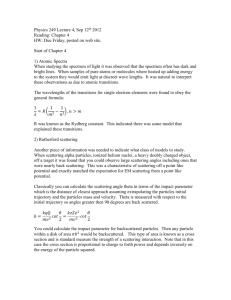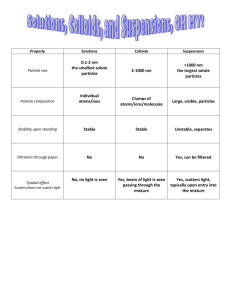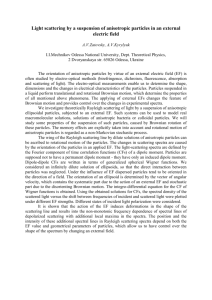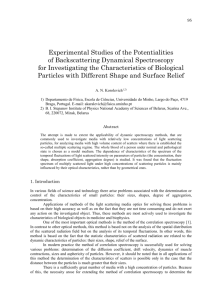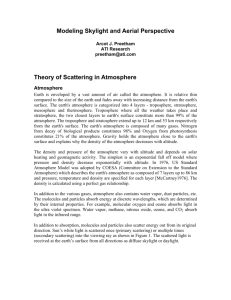Scattering - Weather Outreach
advertisement
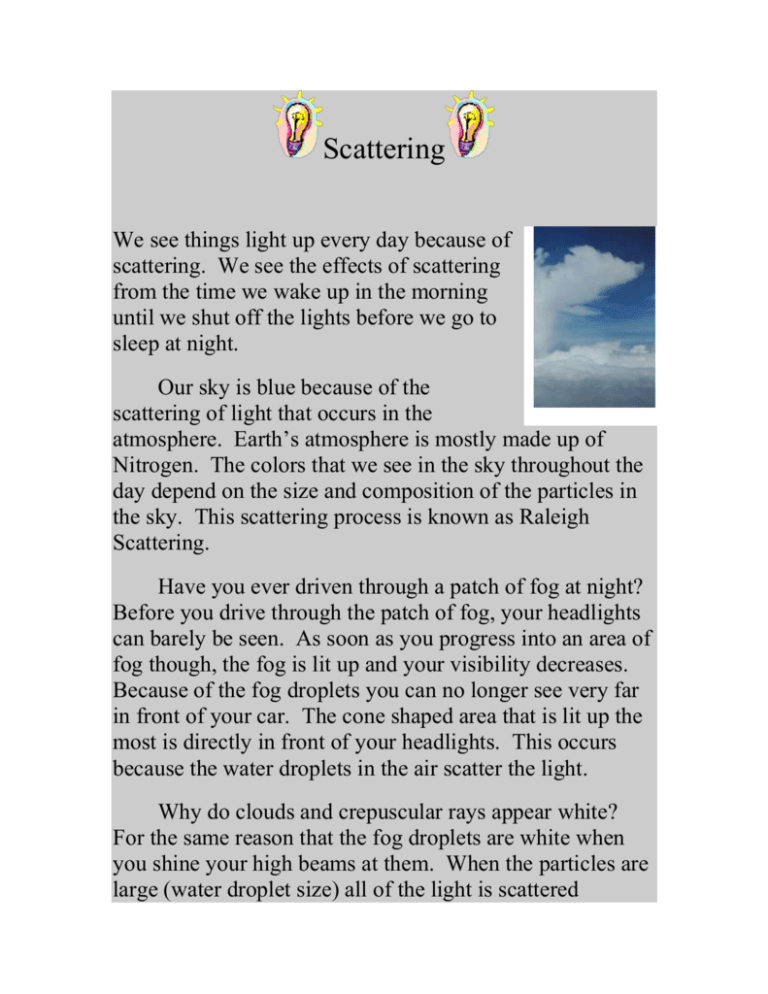
Scattering We see things light up every day because of scattering. We see the effects of scattering from the time we wake up in the morning until we shut off the lights before we go to sleep at night. Our sky is blue because of the scattering of light that occurs in the atmosphere. Earth’s atmosphere is mostly made up of Nitrogen. The colors that we see in the sky throughout the day depend on the size and composition of the particles in the sky. This scattering process is known as Raleigh Scattering. Have you ever driven through a patch of fog at night? Before you drive through the patch of fog, your headlights can barely be seen. As soon as you progress into an area of fog though, the fog is lit up and your visibility decreases. Because of the fog droplets you can no longer see very far in front of your car. The cone shaped area that is lit up the most is directly in front of your headlights. This occurs because the water droplets in the air scatter the light. Why do clouds and crepuscular rays appear white? For the same reason that the fog droplets are white when you shine your high beams at them. When the particles are large (water droplet size) all of the light is scattered equally. We see white light scattered when there are water or ice crystals in the air. Each wavelength of visible light scatters the same amount when the light hits the water droplets. Raleigh Scattering Strange things happen as light rays enter our atmosphere from the sun. As the light enters the earth’s atmosphere it hits many small air molecules. In our atmosphere (made up of 78% Nitrogen, 21% Oxygen and 1% Argon) most of the scattering particles are very small. These air molecules are bombarded with electromagnetic waves (see document) from the sun and begin to vibrate. While vibrating these particles reemit the electromagnetic waves. For example if we have a vibrating paddle in a pool, it will create water waves. Like the vibrating paddle, the particles create waves that pass through space. "Image/Text/Data from the University of Illinois WW2010 Project." Not all particles in the atmosphere reemit the light the same way. Small particles reemit light equally in all directions (see Figure 2-1)(A) and larger particles focus the light mostly in the direction opposite that of the sun (D). Figure 2-1 “Rainbows, Halos, and Glories” When the light reaches your eye from the scattering particles, you see light coming from all directions. The scattered light is emitted by the particles in our atmosphere. Without these particles our sky would be dark. Outer space is dark because there are no particles to scatter the sun’s light. Effects of Particle Sizes Small particles (the size of a Nitrogen Molecule) scatter light with very small wavelengths the best. In our mostly Nitrogen filled atmosphere, blue light is scattered the most. This is why our sky is blue. Have you ever seen a brilliant red sunset? After all of the colors have scattered out of the white light, we see the oranges and reds. Where on the horizon are the red colors found? The reds are found close to the horizon because the sunlight must pass through many particles before we reach the point that red is scattered out. The blues, greens, yellows and oranges have to scatter out as the sun passes through the largest distance through our atmosphere.

